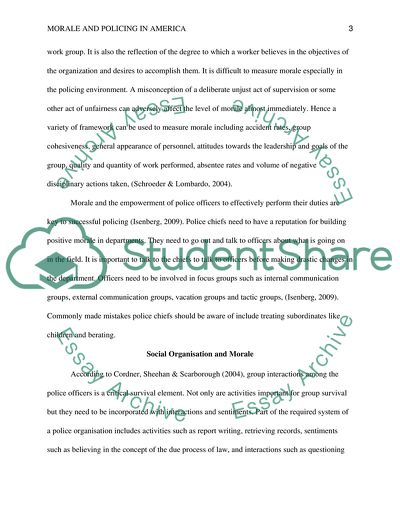Cite this document
(Morale and Policing in America Research Paper Example | Topics and Well Written Essays - 3000 words, n.d.)
Morale and Policing in America Research Paper Example | Topics and Well Written Essays - 3000 words. Retrieved from https://studentshare.org/social-science/1804382-motivation-and-morale-of-law-enforcement-officers
Morale and Policing in America Research Paper Example | Topics and Well Written Essays - 3000 words. Retrieved from https://studentshare.org/social-science/1804382-motivation-and-morale-of-law-enforcement-officers
(Morale and Policing in America Research Paper Example | Topics and Well Written Essays - 3000 Words)
Morale and Policing in America Research Paper Example | Topics and Well Written Essays - 3000 Words. https://studentshare.org/social-science/1804382-motivation-and-morale-of-law-enforcement-officers.
Morale and Policing in America Research Paper Example | Topics and Well Written Essays - 3000 Words. https://studentshare.org/social-science/1804382-motivation-and-morale-of-law-enforcement-officers.
“Morale and Policing in America Research Paper Example | Topics and Well Written Essays - 3000 Words”, n.d. https://studentshare.org/social-science/1804382-motivation-and-morale-of-law-enforcement-officers.


